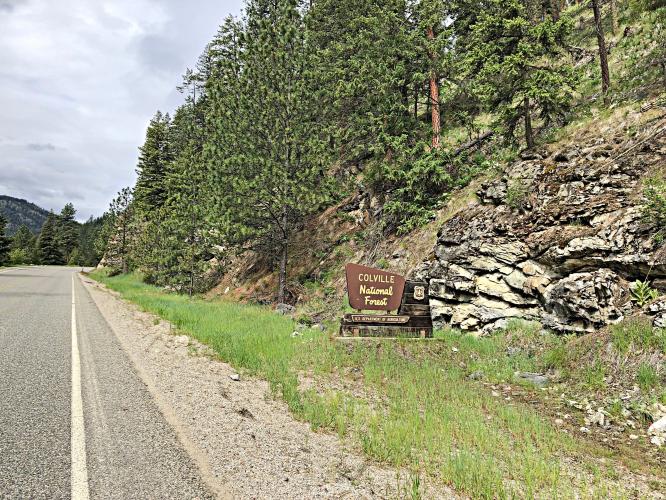![]()
Cycling Boulder Creek Pass
Ride 11.7 miles gaining 3,240’ at 5.2% average grade.
Climb summary by PJAMM’s William Meredith, Seattle, WA.
Starting 12 miles south of the Canadian border, US 395 makes a T with Boulder Creek Road against a backdrop of the Kettle River and a rolling hillside on the far bank. Kicking off about 15 miles north of the entrance to Sherman Pass via highway 20, Boulder Creek road is the quieter, more remote, route of the areas two passes. The road quickly leads into Colville National Forest, part of the larger Kettle Range of Eastern Washington – which is older than both the Cascade and Olympic ranges of Western Washington and was once higher before part of it shifted east, becoming the Huckleberry Range.
![]()
While the climb averages a 5.2% grade, its profile will show that the majority of the climb consists of sections that alternate between short legs of 7%-9% followed by short legs of 1%-3% grade. You might notice this the most in your breathing. Each time your breath and heart rate start to pick up on steeper road, it will be counter balanced by a few hundred flatter recovery yards. The result is a climb that never makes you work harder than you want to.
![]()
Slight rollers on the upper segment of the climb.
Boulder Creek road sticks to the north side of a valley which diverts water into the North Fork Boulder Creek, south of the road. Keep an eye on the hillside, to the right, while climbing. The Colville National Forest is home to a variety of large mammals including bighorn sheep, cougars, bears, and the last remaining heard of caribou in the lower 48.
Recently, forest fires have altered the scenery of the climb’s last 4 miles. Replacing the thick forest on each side, are rows and rows of black, skinny, trunks of burnt trees. Your line of sight extends now, past the trees to the crest of each hill and the sky behind it. The hillsides grow quiet as the upper reaches of the creek produce no noise. The wind that before moved against branches and needles, cuts quickly through the new landscape. The fire has reset the ecosystem at the top of Boulder Creek Pass. Already, grasses have regrown and pyrophytic pine cones, activated in the blaze, are working to repopulate the summit.
![]()

 We've partnered with Sherpa-Map.com to bring you the best route planning tool. With a PRO Membership you can use this climb as a reference when creating your route.
We've partnered with Sherpa-Map.com to bring you the best route planning tool. With a PRO Membership you can use this climb as a reference when creating your route. 

